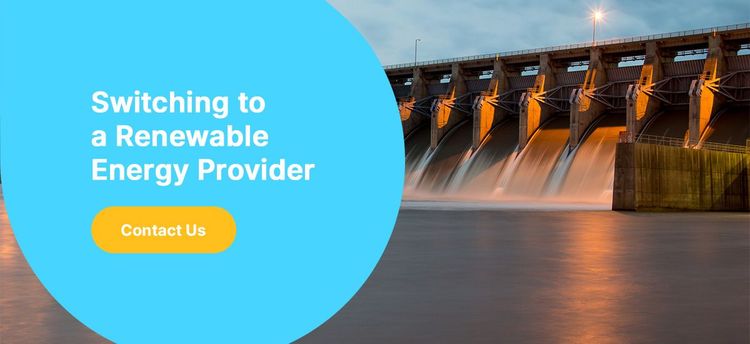17 Oct 2024

With annual greenhouse gas emissions remaining on an upward trend in recent years, switching to a renewable energy provider is more important now than ever. This switch offers several benefits, including access to energy that doesn't produce greenhouse gases, expanded energy accessibility for remote communities and enhanced power grid resilience and reliability.
If you plan to switch to a renewable energy provider anytime soon, this renewable energy guide has everything you need to know to make a successful switch.
Renewable energy is energy acquired from natural resources such as the sun, wind and water that are replenished faster than they are used. Since these renewable energy solutions are abundant and widely available, they are also often referred to as sustainable energy options — as long as their environmental impacts are properly managed. Renewable energy providers offer this energy in various forms, including hydropower, geothermal, solar and wind-generated power in a retail package for residential and commercial use.
Other renewable energy options, such as crops or biomatter, may not qualify as sustainable energy options if their land use and care are not considered. This means not all renewable energy options are sustainable, but all sustainable energy solutions are renewable.
Renewable energy offers remarkable environmental and economic benefits such as:
Several misconceptions exist about renewable energy in comparison with non-renewable options. Some of the most common ones include:
When you're ready to switch to green energy, the first step is to assess your current energy provider so you can weigh your options effectively.
Reviewing your current energy bill is the first step in the assessment process. Also, check if your details are up to date to avoid scenarios where you unknowingly pay bills for somebody else.
The next step is to break down your energy consumption and needs. You would want to check each person's activities at home or business and how those activities impact energy consumption.
Lastly, identify the percentage of renewable energy in your current supply. This step helps you realize which clean energy alternatives you need to meet your normal consumption and assess the performance of the sustainable energy solutions you're already using.
Launching an online search is the most effective way to research renewable or clean energy providers in your area. Online research can include general research and comparison websites to compare energy prices from different providers and their pricing solutions.
You can also read ads, reviews and customer testimonials and get recommendations from friends to understand your potential providers' services.
Here are some key factors to consider when choosing a provider:
When you're finally ready to switch to clean energy alternatives, you can follow these three important steps to make a successful switch:
Once everything is in place, the transition process can be completed within the same day you submit your request.
With the help of smart meters, you can access real-time monitoring of how much energy you use hourly and during the month as a first step to maximizing your renewable energy use. Once you know the amount of energy you use and where it's mostly spent, working on the tips to reduce overall energy consumption is easier.
Here are some practical tips you can consider:
From cleaner energy production processes and reduced dependency on imported fuel to job creation and improved reliability on the power grid, you have every reason to switch to sustainable energy options.
At Northeastern Power, we'll help you accomplish a smooth transition at a price you love. Contact us today to switch to green energy with the help of a leading renewable energy provider.